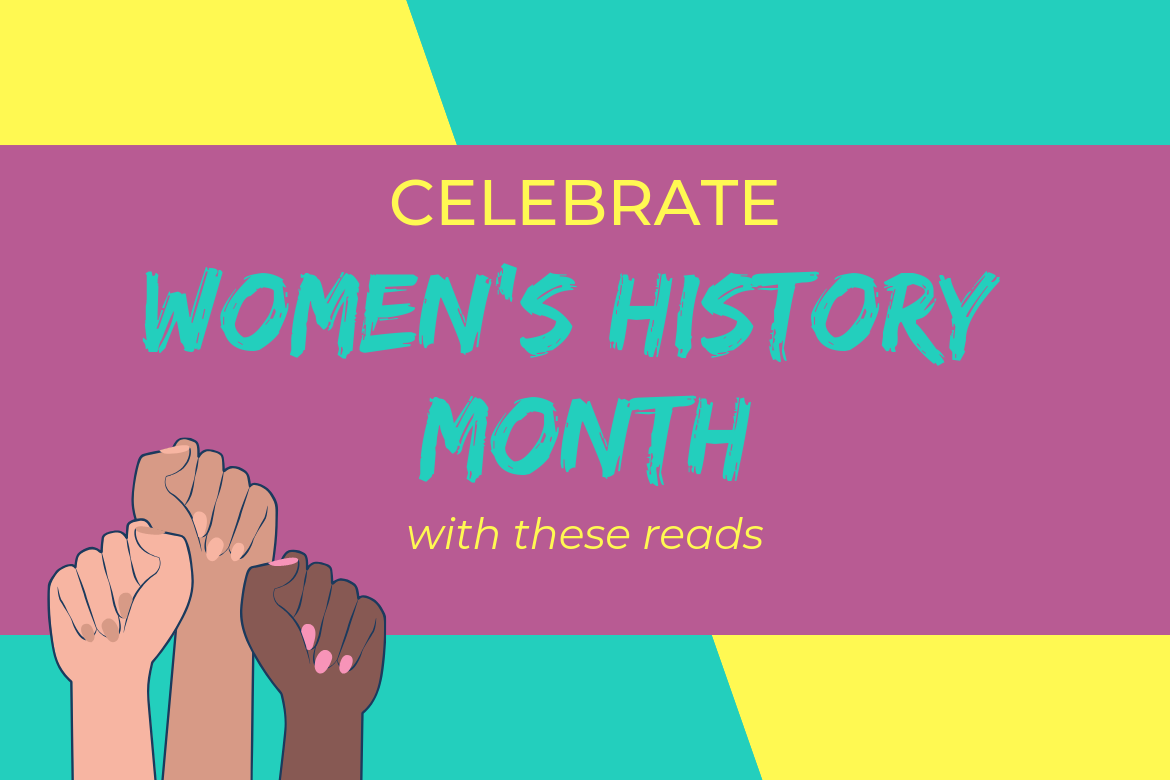March is Women’s History Month and is dedicated to highlighting the contributions of women to events in history and today. To celebrate the power of women, we’ve put together a list of inspiring and informative reads about some truly remarkable real-life heroines.
#WomensHistoryMonth
Plus, enter for your chance to win a copy of one of our feature titles—Mrs. Morhard and the Boys!
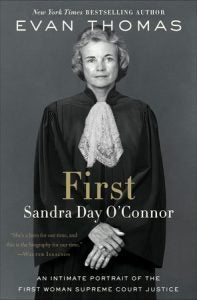
First: Sandra Day O’Connor by Evan Thomas
The intimate, inspiring, and authoritative biography of Sandra Day O’Connor, America’s first female Supreme Court justice, drawing on exclusive interviews and first-time access to Justice O’Connor’s archives—by the New York Times bestselling author Evan Thomas.
She was born in 1930 in El Paso and grew up on a cattle ranch in Arizona. At a time when women were expected to be homemakers, she set her sights on Stanford University. When she graduated near the top of her law school class in 1952, no firm would even interview her. But Sandra Day O’Connor’s story is that of a woman who repeatedly shattered glass ceilings—doing so with a blend of grace, wisdom, humor, understatement, and cowgirl toughness.
She became the first ever female majority leader of a state senate. As a judge on the Arizona Court of Appeals, she stood up to corrupt lawyers and humanized the law. When she arrived at the United States Supreme Court, appointed by President Ronald Reagan in 1981, she began a quarter-century tenure on the Court, hearing cases that ultimately shaped American law. Diagnosed with cancer at fifty-eight, and caring for a husband with Alzheimer’s, O’Connor endured every difficulty with grit and poise.
Look Inside for an Excerpt.
Click for a Discussion Guide.
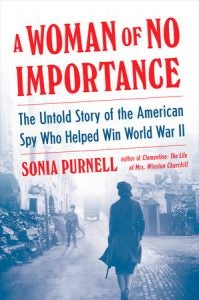
A Woman of No Importance: The Untold Story of the American Spy Who Helped Win World War II by Sonia Purnell
The never-before-told story of one woman’s heroism that changed the course of the Second World War.
In 1942, the Gestapo sent out an urgent transmission: “She is the most dangerous of all Allied spies. We must find and destroy her.”
The target in their sights was Virginia Hall, a Baltimore socialite who talked her way into Special Operations Executive, the spy organization dubbed Winston Churchill’s “Ministry of Ungentlemanly Warfare.” She became the first Allied woman deployed behind enemy lines and–despite her prosthetic leg—helped to light the flame of the French Resistance, revolutionizing secret warfare as we know it.
Virginia established vast spy networks throughout France, called weapons and explosives down from the skies, and became a linchpin for the Resistance. Even as her face covered wanted posters and a bounty was placed on her head, Virginia refused order after order to evacuate. She finally escaped through a death-defying hike over the Pyrenees into Spain, her cover blown. But she plunged back in, adamant that she had more lives to save, and led a victorious guerilla campaign, liberating swathes of France from the Nazis after D-Day.
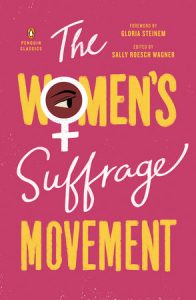
The Women’s Suffrage Movement Edited by Sally Roesch Wagner; Foreward by Gloria Steinem
An intersectional anthology of works by the known and unknown women that shaped and established the suffrage movement, in time for the 2020 centennial of women’s right to vote, with a foreword by Gloria Steinem.
Comprised of historical texts spanning two centuries, The Women’s Suffrage Movement is a comprehensive and singular volume that covers the major issues and figures involved in the movement, with a distinctive focus on diversity, incorporating race, class, and gender, and illuminating minority voices. In an effort to spotlight the many influential voices that were excluded from the movement, the writings of well-known suffragists such as Elizabeth Cady Stanton and Susan B. Anthony are featured alongside accounts of Native American women who inspired suffragists like Matilda Joslyn Gage to join the movement, as well as African American suffragists such as Sarah Mapps Douglas and Harriet Purvis, who were often left out of the conversation because of their race.
Look Inside for an Excerpt.

Madame Fourcade’s Secret War: The Daring Young Woman Who Led France’s Largest Spy Network Against Hitler by Lynne Olson
The little-known true story of Marie-Madeleine Fourcade, the woman who headed the largest spy network in occupied France during World War II, from the bestselling author of Citizens of London and Last Hope Island.
In 1941 a thirty-one-year-old Frenchwoman became the leader of a vast intelligence organization—the only woman to serve as a chef de résistance during the war. Strong-willed, independent, and a lifelong rebel against her country’s conservative, patriarchal society, Marie-Madeleine Fourcade was temperamentally made for the job. Her group’s name was Alliance, but the Gestapo dubbed it Noah’s Ark because its agents used the names of animals as their aliases.
No other French spy network lasted as long or supplied as much crucial intelligence as Alliance. The Gestapo pursued them relentlessly, capturing, torturing, and executing hundreds of its three thousand agents, including Fourcade’s own lover and many of her key spies. Although Fourcade, the mother of two young children, moved her headquarters every few weeks, constantly changing her hair color, clothing, and identity, she was captured twice by the Nazis. Both times she managed to escape—once by slipping naked through the bars of her jail cell—and continued to hold her network together even as it repeatedly threatened to crumble around her.
Look Inside for an Excerpt.

What the Eyes Don’t See: A Story of Crisis, Resistance, and Hope in an American City by Mona Hanna-Attisha
The dramatic story of the Flint water crisis, by a relentless physician who stood up to power.
Here is the inspiring story of how Dr. Mona Hanna-Attisha, alongside a team of researchers, parents, friends, and community leaders, discovered that the children of Flint, Michigan, were being exposed to lead in their tap water—and then battled her own government and a brutal backlash to expose that truth to the world. Paced like a scientific thriller, What the Eyes Don’t See reveals how misguided austerity policies, broken democracy, and callous bureaucratic indifference placed an entire city at risk. And at the center of the story is Dr. Mona herself—an immigrant, doctor, scientist, and mother whose family’s activist roots inspired her pursuit of justice.
What the Eyes Don’t See is a riveting account of a shameful disaster that became a tale of hope, the story of a city on the ropes that came together to fight for justice, self-determination, and the right to build a better world for their—and all of our—children.
“Mona Hanna-Attisha is a true American hero.”—Erin Brockovich
“Revealing, with the gripping intrigue of a Grisham thriller.” —O: The Oprah Magazine
Click to Read an Excerpt.

Era of Ignition: Coming of Age in a Time of Rage and Revolution by Amber Tamblyn
A passionate and deeply personal exploration of feminism during divisive times by actor, filmmaker, and activist Amber Tamblyn.
In her late twenties, Amber Tamblyn experienced a crisis of character while trying to break out of the confines of the acting career she’d forged as a child in order to become the writer and director she dreamed of being as an adult. After a particularly low period fueled by rejection and disillusionment, she grabbed hold of her own destiny and entered into what she calls an Era of Ignition—namely, the time of self-reflection that follows in the wake of personal upheaval and leads to a call to action and positive change.
In the process of undergoing this metaphysical metamorphosis, she realized that our country was going through an Era of Ignition of its own.
Through her fierce op-eds and tireless work as one of the founders of the Time’s Up organization, Amber has emerged as a bold, outspoken, and respected advocate for women’s rights. In Era of Ignition, she addresses gender inequality and the judgment paradigm, misogyny and discrimination, trauma and the veiled complexities of consent, white feminism and pay parity, reproductive rights and sexual assault–all told through the very personal lens of her own experiences, as well as those of her Sisters in Solidarity.
Click to Read an Excerpt.
Click for a Discussion Guide.
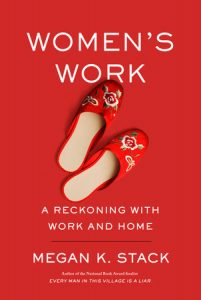
Women’s Work: A Reckoning with Work and Home by Megan K. Stack
A National Book Award finalist’s unforgettable account of raising her children abroad with the help of Chinese and Indian women who are also working mothers.
When Megan Stack left her prestigious job as a foreign correspondent to have a baby and work from her home in Beijing writing a book, she quickly realized that childcare and housework would consume the time she needed to write. This dilemma was resolved in the manner of many upper class families and large corporations: she availed herself of cheap Chinese labor.
The housekeeper Stack hired was a migrant from the countryside, a mother who had left her daughter in a precarious situation to earn desperately needed cash in the capital. As Stack’s family grew, a series of Chinese and Indian women cooked, cleaned and babysat in her home and she grew increasingly aware of the brutal realities of their lives: domestic abuse, alcoholism, unplanned pregnancies, medical and family crises. Hiring poor women had given Stack the ability to work while raising her children—but what ethical compromise had she made?
Determined to confront the truth, Stack traveled to her employees’ homes, met their parents and children, and turned a journalistic eye on the tradeoffs they’d been forced to make as working mothers seeking upward mobility—and on the cost to the children who were left behind.
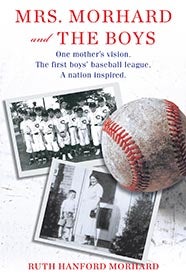
Mrs. Morhard and the Boys: One Mother’s Vision. The First Boys’ Baseball League. A Nation Inspired. By Ruth Hanford Morhard
As the Great Depression brought America to the brink of disaster, a devoted single mother in Cleveland, Ohio, wrestled triumph out of adversity by creating a community activity that would inspire the nation.
Josephine Morhard never waited for something to happen. Coming of age during one of the most devastating times in America, and weathering two bad marriages, Josephine put her personal problems aside to insure a productive future for her daughter and son. But Junior was a volatile boy of eight—until his mother came upon a novel sports idea to encourage discipline, guidance, and self-worth in her son. Out of a dream, an empty lot, and the enthusiasm of other neighborhood kids, Josephine established the first boys’ baseball league in America. Her city—and the country—was watching.
Beyond all expectations, the Cleveland Indians rallied behind her project. Indians legends Bob Feller, Jeff Heath, and Roy Weatherly helped hone the boys’ skills; renowned sports reporter Hal Lebovitz became an umpire; and they were given permission to play in historic League Park. All the while, as Josephine’s Little Indians graduated into the Junior American and Junior National Leagues, and finally a Little World Series, she instilled in her boys strong values, good sportsmanship, and an unprecedented sense of accomplishment. Some of them, like Ray Lindquist and Jack Heinen, would become Minor League players. Not one of Mrs. Morhard’s boys would ever forget her.
Enter for a Chance to Win a Copy of Mrs. Morhard and the Boys.
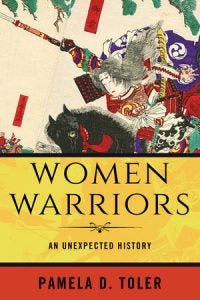
Women Warriors: An Unexpected History by Pamela D. Toler
Who says women don’t go to war? From Vikings and African queens to cross-dressing military doctors and WWII Russian fighter pilots, these are the stories of women for whom battle was not a metaphor.
The woman warrior is always cast as an anomaly—Joan of Arc, not GI Jane. But women, it turns out, have always gone to war. In this fascinating and lively world history, Pamela Toler not only introduces us to women who took up arms, she also shows why they did it and what happened when they stepped out of their traditional female roles to take on other identities.
These are the stories of women who fought because they wanted to, because they had to, or because they could. Among the warriors you’ll meet are: Tomyris, ruler of the Massagetae, who killed Cyrus the Great of Persia when he sought to invade her lands; The West African ruler Amina of Hausa, who led her warriors in a campaign of territorial expansion for more than 30 years; Boudica, who led the Celtic tribes of Britain into a massive rebellion against the Roman Empire to avenge the rapes of her daughters; and The Trung sisters, Trung Trac and Trung Nhi, who led an untrained army of 80,000 troops to drive the Chinese empire out of Vietnam.
By considering the ways in which their presence has been erased from history, Toler reveals that women have always fought—not in spite of being women but because they are women.
Look Inside for an Excerpt.

Modern HERstory: Stories of Women and Nonbinary People Rewriting History by Blair Imani
An inspiring and radical celebration of 70 women, girls, and gender nonbinary people who have changed–and are still changing—the world, from the Civil Rights Movement and Stonewall riots through Black Lives Matter and beyond.
With a radical and inclusive approach to history, Modern HERstory profiles and celebrates seventy women and nonbinary champions of progressive social change in a bold, colorful, illustrated format for all ages. Despite making huge contributions to the liberation movements of the last century and today, all of these trailblazers come from backgrounds and communities that are traditionally overlooked and under-celebrated: not just women, but people of color, queer people, trans people, disabled people, young people, and people of faith. Authored by rising star activist Blair Imani, Modern HERstory tells the important stories of the leaders and movements that are changing the world right here and right now–and will inspire you to do the same.An inspiring and radical celebration of 70 women, girls, and gender nonbinary people who have changed–and are still changing–the world, from the Civil Rights Movement and Stonewall riots through Black Lives Matter and beyond.
Click to Read an Excerpt.
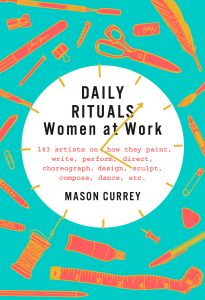
Daily Rituals: Women at Work by Mason Currey
More of Mason Currey’s irresistible Daily Rituals, this time exploring the daily obstacles and rituals of women who are artists—painters, composers, sculptors, scientists, filmmakers, and performers. We see how these brilliant minds get to work, the choices they have to make: rebuffing convention, stealing (or secreting away) time from the pull of husbands, wives, children, obligations, in order to create their creations.
From those who are the masters of their craft (Eudora Welty, Lynn Fontanne, Penelope Fitzgerald, Marie Curie) to those who were recognized in a burst of acclaim (Lorraine Hansberry, Zadie Smith) . . . from Clara Schumann and Shirley Jackson, carving out small amounts of time from family life, to Isadora Duncan and Agnes Martin, rejecting the demands of domesticity, Currey shows us the large and small (and abiding) choices these women made—and continue to make—for their art.

